With their large size and thick coats, Bernese mountain dogs cut an imposing sight. These stunning dogs hail from the Swiss mountains, where they originally worked as farm dogs. Indeed, they are best known for their ability to work with livestock – both as cattle herding dogs and as protectors. But that’s not all there is to learn about this fascinating breed, so join us as we discover 10 incredible Bernese mountain dog facts!
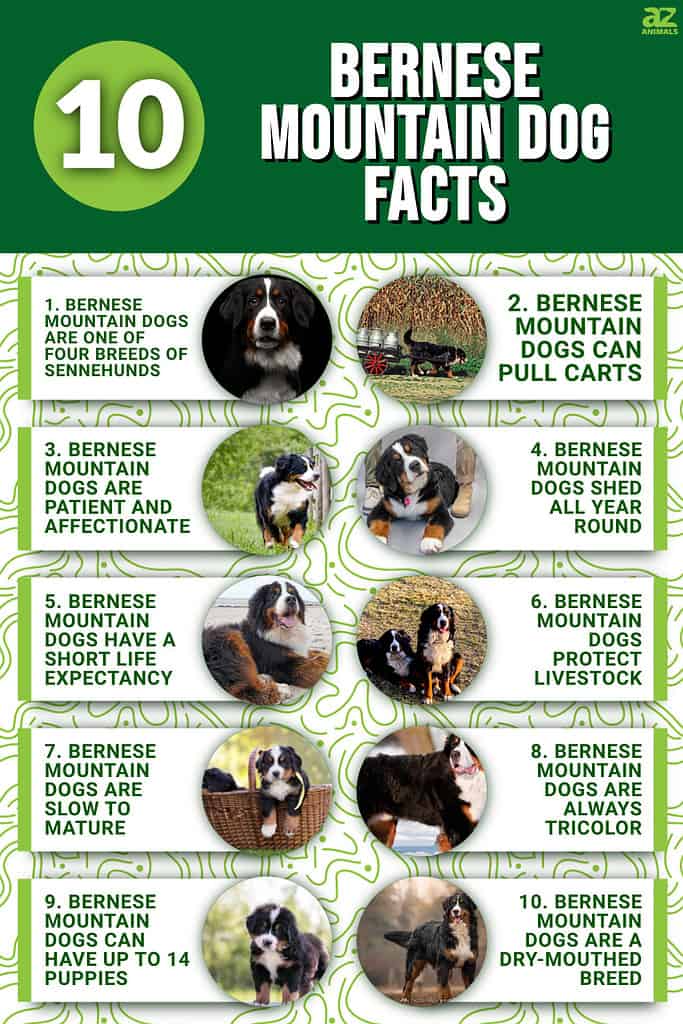
1. Bernese Mountain Dogs are One of Four Breeds of Sennehunds
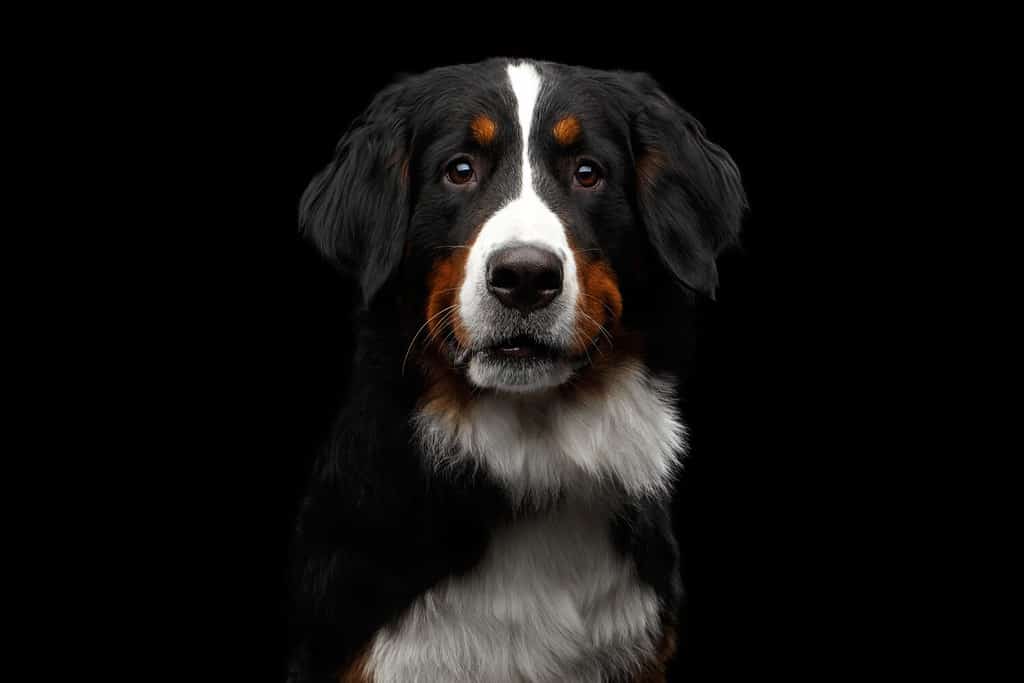
Bernese mountain dogs are the second largest of the Sennehunds.
©Seregraff/Shutterstock.com
Bernese mountain dogs originated in the Swiss Alps, and their lineage can be traced back approximately 2,000 years. Incredibly, they are one of only four breeds of Sennehund dogs. Sennehunds – also known as Swiss mountain dogs – are sturdy farm dogs from Switzerland. With weights of up to 115 pounds and standing between 23 and 27 inches at the shoulder, Bernese mountain dogs are the second largest of the Sennehunds. Only the Greater Swiss mountain dog is larger, while the Appenzeller mountain dogs and the Entlebucher mountain dogs are smaller. Bernese mountain dogs are also further distinguished from the other breeds by their coat as they are the only ones of the four to have long hair.
2. Bernese Mountain Dogs can Pull Carts

As farm dogs, one of their original jobs was to pull a cart carrying produce such as milk and cheese to market every week.
©iStock.com/slowmotiongli
One of the most incredible things about Bernese mountain dogs is that they are capable of pulling small carts. They are large and powerful dogs that are incredibly versatile and able to do a wide range of jobs. As farm dogs, one of their original jobs was to pull a cart carrying produce such as milk and cheese to market every week. Nowadays, people compete in “carting courses” and competitions with them.
3. Bernese Mountain Dogs are Patient and Affectionate
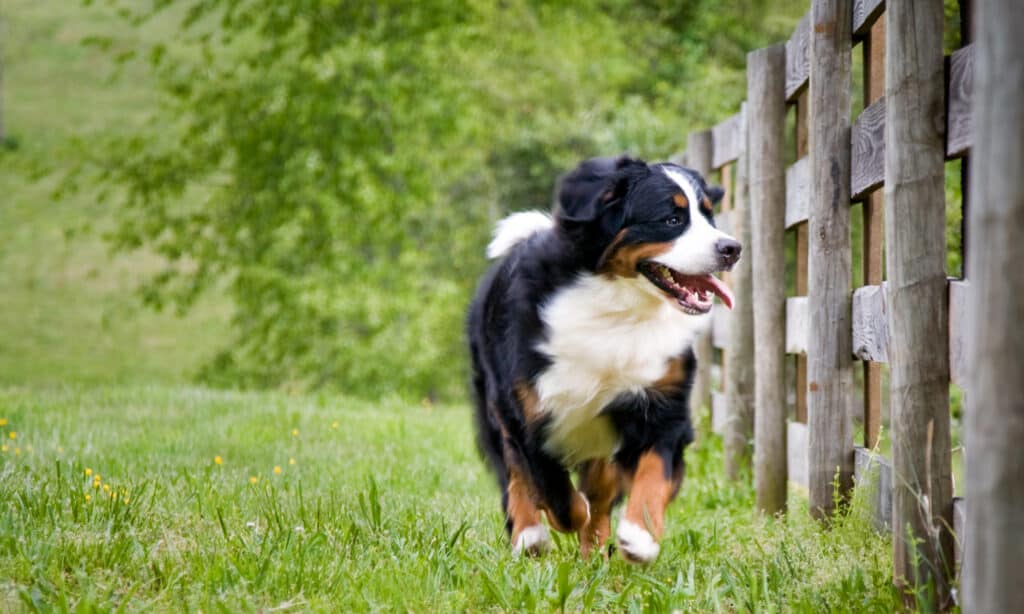
Despite their size, Bernese mountain dogs are very gentle and affectionate.
©vahamrick/Shutterstock.com
Easily, one of the most attractive things about Bernese mountain dogs is their nature, as they are incredibly gentle and affectionate dogs. They are extremely intelligent and are eager to please which makes them easy to train. They are also very patient dogs which makes them great dogs for the whole family. Despite their large size, they are also considered to be one of the least aggressive breeds of dogs around.
4. Bernese Mountain Dogs Shed all Year Round
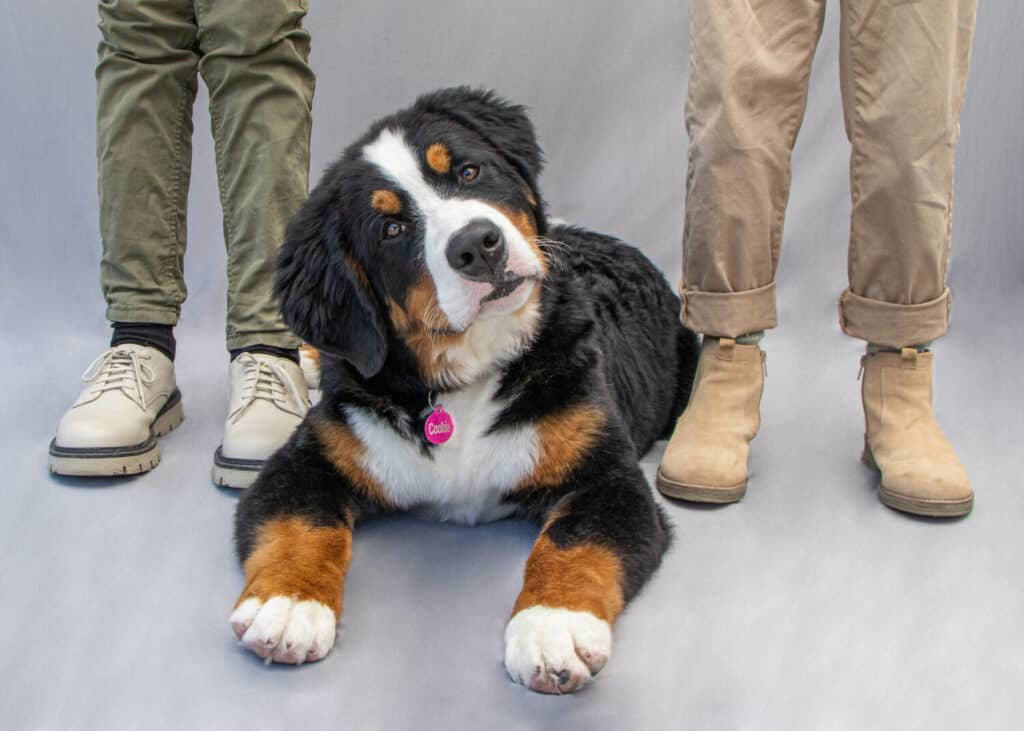
Dogs with a double-layer coat have a shorter cycle of hair growth than those with a single-layer coat.
©JC2510/Shutterstock.com
As we mentioned earlier, Bernese mountain dogs are the only Sennehund to have a long coat. In fact, they are renowned for their thick and silky coat which provides them with plenty of protection from the harsh mountain weather. This is because they have a double-layered coat. Dogs with a double-layer coat have a shorter cycle of hair growth than those with a single-layer coat. This results in them shedding all year round. However, although Bernese mountain dogs shed all year, they still shed more heavily twice a year – in the spring and the fall.
5. Bernese Mountain Dogs Have a Short Life Expectancy
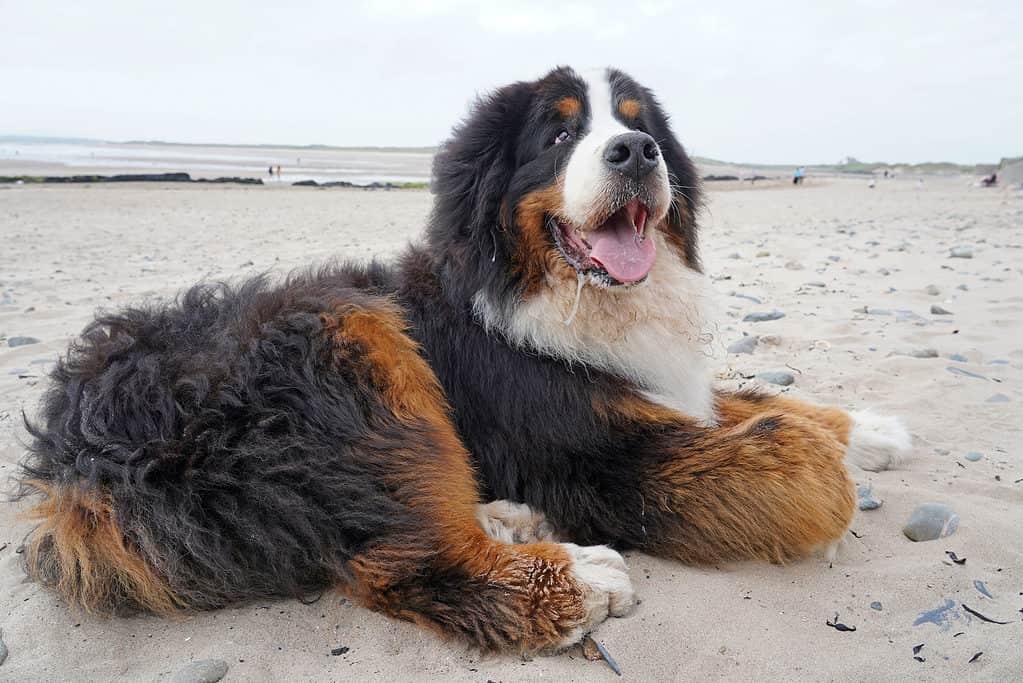
Bernese mountain dogs only have a life expectancy of 6 to 8 years.
©iStock.com/Kriste Sorokaite
Unfortunately, the downside to owning a Bernese mountain dog is that it has a fairly short lifespan. Although many other dog breeds have a life expectancy that exceeds 10 years, Bernese mountain dogs only have a life expectancy of 6 to 8 years. Sadly, this short lifespan is because they often develop some health problems, with cancer being one of the most common. Other problems include hip and elbow dysplasia and various eye conditions.
6. Bernese Mountain Dogs Protect Livestock
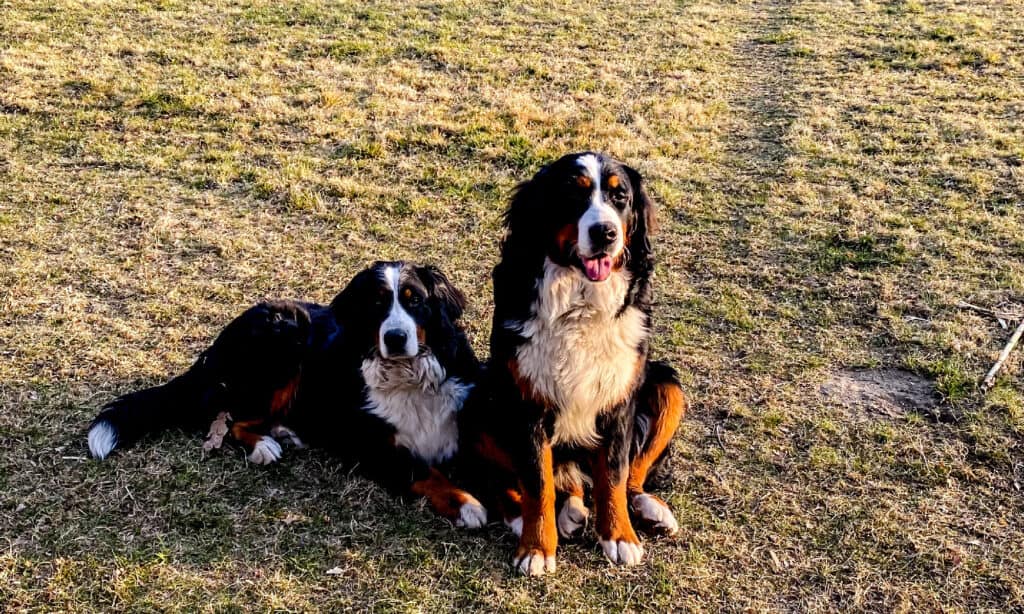
Bernese mountain dogs protect livestock from predators.
©iStock.com/Marketa Vydrova
For centuries, Bernese mountain dogs have worked tirelessly alongside their owners on farms, and even today their main role is to guard livestock. With their calm yet independent nature, these dogs are perfect for the job and take on their duties. In many cases, the dog lives with the livestock and patrols the fence line where they fend off predators such as stray dogs and wolves. Quite often, they even develop a bond with their flock of sheep or herd of goats or cattle as they are so dedicated to their job.
7. Bernese Mountain Dogs are Slow to Mature
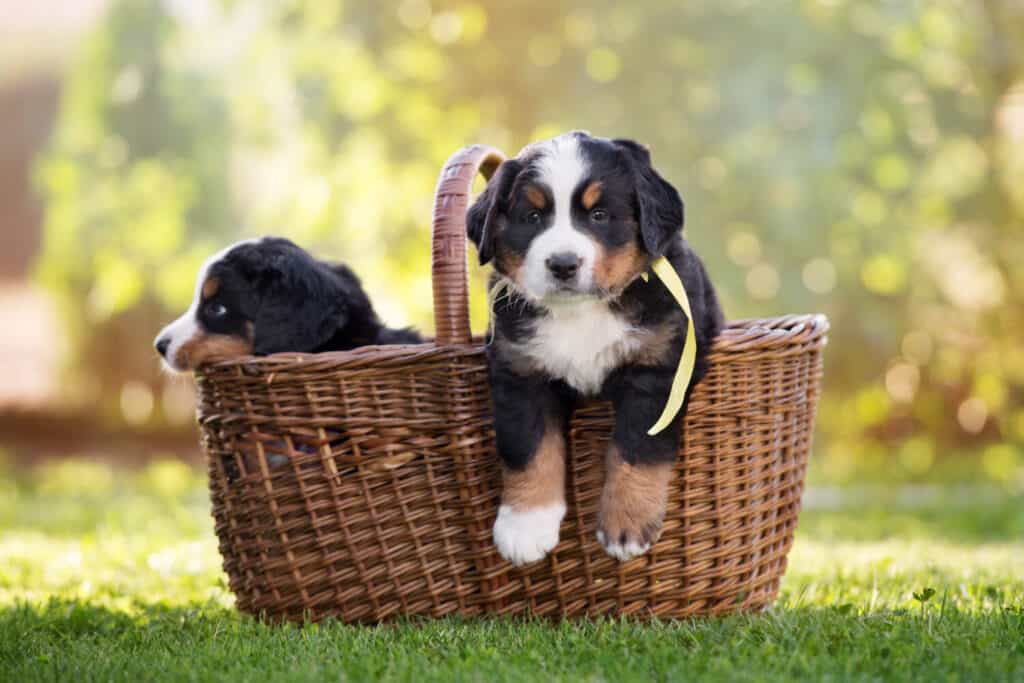
These dogs don’t reach their full adult size until they are 2 to 3 years old and – just like their bodies – it takes them a while to mature mentally.
©otsphoto/Shutterstock.com
All puppies are incredibly cute and adorable, especially when they’re still in that goofy, playful stage. Bernese mountain dogs are no exception, but owners of them get to enjoy that playful puppy stage for a bit longer. This is because Bernese mountain dogs are actually really slow to mature. They don’t reach their full adult size until they are 2 to 3 years old and – just like their bodies – it takes them a while to mature mentally. This means that as working dogs, it takes time for them to fully settle down and be mature enough to learn to work.
8. Bernese Mountain Dogs are Always Tricolor
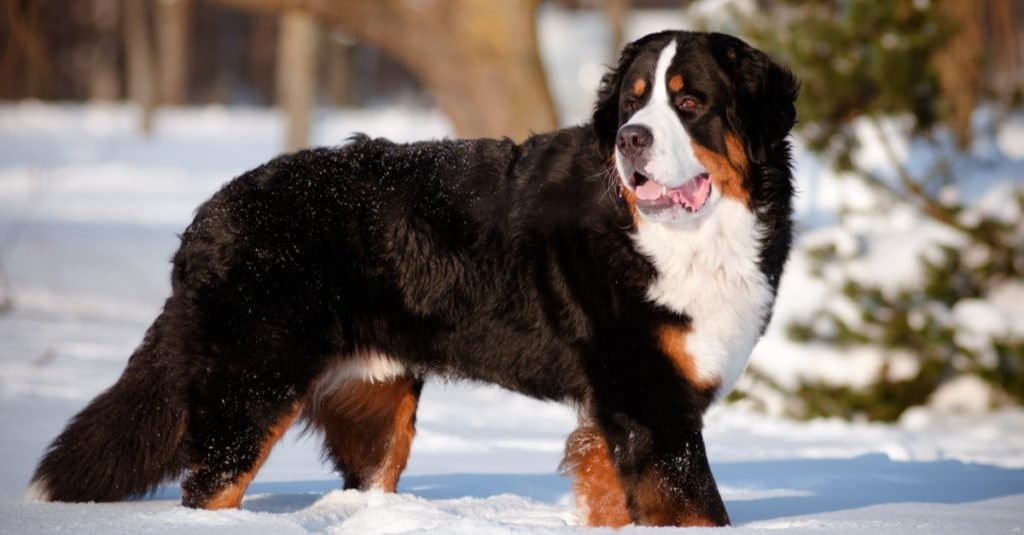
Bernese Mountain dogs are always tricolor with black being the main body color.
©otsphoto/Shutterstock.com
One of the things that Bernese mountain dogs are best known for is their stunning coat. Amazingly, all Bernese mountain dogs (and all Sennehunds) are actually tri-color. Black is usually the predominant color with the other two colors being brown and white. Typically, they have black bodies with white chests, white around the nose, brown above the eyes, and around the mouth and front legs.
9. Bernese Mountain Dogs can have up to 14 Puppies
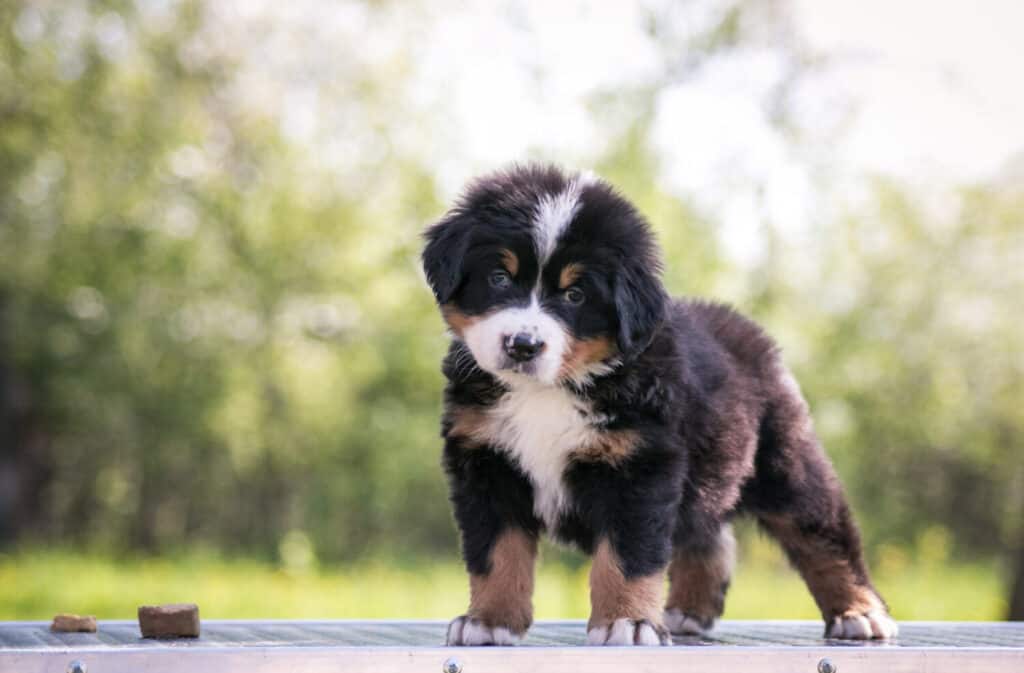
Their average litter size is 8 puppies, which is higher than the general average across other dog breeds.
©Eve Photography/Shutterstock.com
As they are such large dogs, Bernese mountain dogs are able to give birth to a lot of puppies too! Incredibly, they are capable of having up to 14 puppies in a single litter. Even their average litter size is 8 puppies, which is higher than the general average across other dog breeds.
10. Bernese Mountain Dogs are a Dry-Mouthed Breed
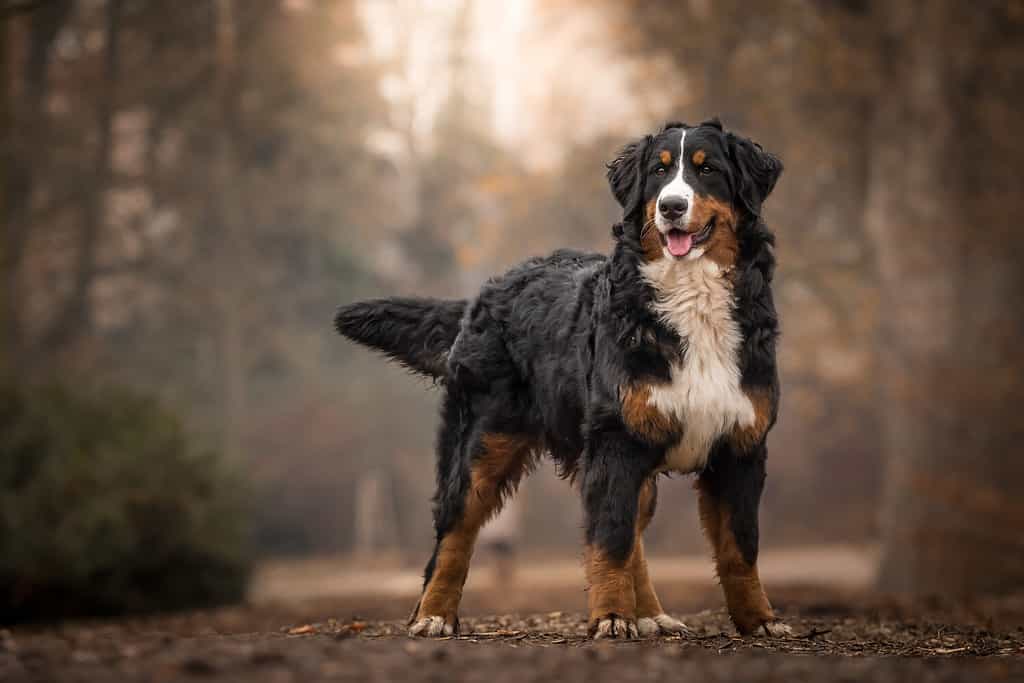
Despite their large jowls, Bernese mountain dogs don’t actually drool more than other dogs because they are a dry-mouthed dog breed.
©xkunclova/Shutterstock.com
One of the inevitable things about owning a dog is having to deal with drool. However, despite their large jowls, Bernese mountain dogs don’t actually drool more than other dogs. This is because they are a dry-mouthed dog breed. But that’s not to say that they don’t drool at all, because they do. It simply depends on the individual dog, the size and position of their lips as to just how much they actually slobber.
The photo featured at the top of this post is © otsphoto/Shutterstock.com
Ready to discover the top 10 cutest dog breeds in the entire world?
How about the fastest dogs, the largest dogs and those that are -- quite frankly -- just the kindest dogs on the planet? Each day, AZ Animals sends out lists just like this to our thousands of email subscribers. And the best part? It's FREE. Join today by entering your email below.
Thank you for reading! Have some feedback for us? Contact the AZ Animals editorial team.







